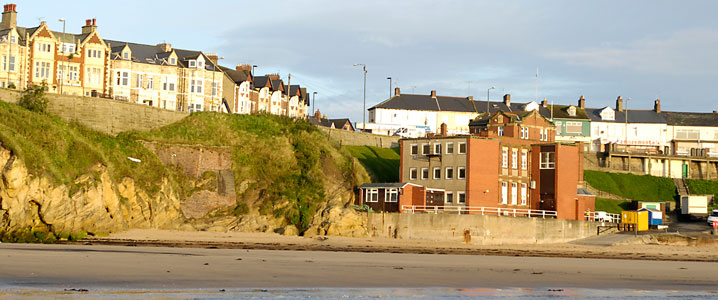Wednesday 16th – Thursday 17th saw me attending my first sandpit event. Not really knowing what one was even when I was told I would be attending a sandpit event by the beach in Cullercoats I got very excited. Unfortunately I wasn’t given a bucket and spade on arrival but actually found the event probably more enjoyable and interesting than merely making sand castles on the beach for 2 days.

The event was actually part of the Urban Observatory (UO) with the aim of the 2 days to come up with ideas of pilot projects that could form part of the overall UO. The focus for the first morning was to brainstorm ideas of what data we should be recording and how we should be recording it. With a wide array of sectors being represented in the room these ideas varied greatly from transport flows, microbiology of computer keyboard, building movements and people’s motivations. In the afternoon we were asked to predict what the world will be like in 20 years time. With most group taking a pessimistic approach the outlook proposed was rather depressing. Basically climate change will only get worse, economic disparity will increase, society will divide , technology will take over people’s lives and who knows what league Norwich City will be playing in. The conclusion made was if this is to happen the Urban Observatory has to be the “good-guy” and not just record interesting information but to make recordings and carry out analysis that will help the general public and feed this data back to the general public in a manner which will be beneficial to masses.
Day 2 begun with cross-sectoral teams of three sent off to come up with an idea that represented the overlap in the 3 represented sectors of research. This is where my blog post has to get a bit cagey as it seemed every idea that came from this breakout session was either a clever or novel piece of research. The main overall theme of the ideas was public participation, either in collection of the data or in how the data was disseminated. These ideas were then honed down with more people contributing their suggestions on how an idea could be improved. As a result of this process 7 projects began to take shape. These ideas were presented to the group with more feedback coming from across the room. Some more polishing was done taking on board the feedback before again each of the 7 projects were presented. Each of which I thought had the potential for some great research and development to take place. Having not been to an event like this before I didn’t know whether this was a good haul or not. But I was told it is very rare for there to be so many good ideas which exhibit so much cross-sectoral research. Either way I don’t envy those in charge of whittling these ideas down.
I’d like to thank Rich, Phil and the other members of the UO team that put on the event. And a massive thanks to Tim and Liz from KnowInnovations for brilliantly facilitating the event.
Neil – @neil_py_harris
